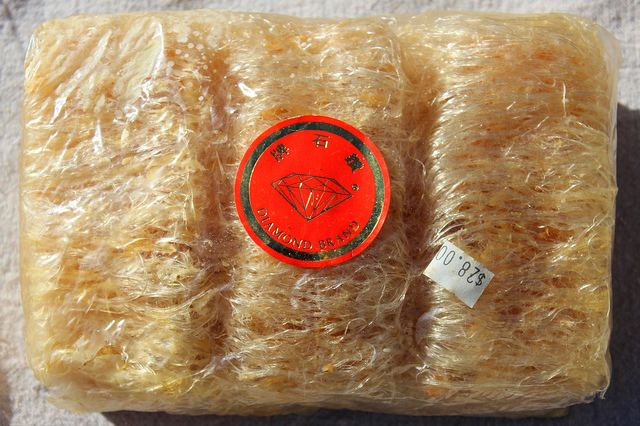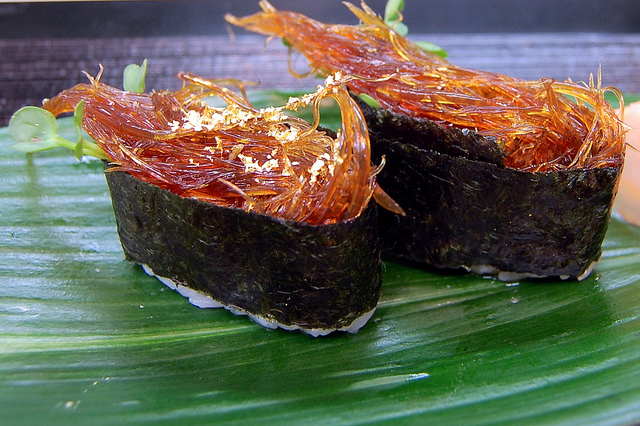Shark fin: It’s not what’s for dinner
By Louisa Chu

Shark fin: It’s not what’s for dinner
By Louisa Chu
The new Illinois law banning shark fin went into effect on New Year’s Day, but you can still legally eat shark fin soup in Chicago’s Chinatown today. If you already had shark fin before January 1, 2013, you “may possess, sell, offer for sale, trade, or distribute a shark fin” until July 1, 2013, so eat up.
Or don’t.
The package of dried shark fin you see above is “20 or 30 years-old” according to its owner, who received it as a gift, and has no plans to ever cook or eat it.
I have eaten shark fin, in soup at Chinese banquets in this country and as sushi in Japan, but have never ordered it myself. There’s not much taste, with a texture like al dente cooked mei fun (rice vermicelli), the key ingredient in the Hong Kong diner classic Singapore noodles.
The primary appeal has been status, accorded by a relatively high price. At Lao You Ju, one bowl is currently listed on the menu at $16.
But at Benu in San Francisco, chef Corey Lee created a “shark’s fin” soup using faux fin made with hydrocolloids. They’re ingredients found throughout our city, with our masters of modernist food. Lee’s soup features a black truffle custard, with Jinhua ham (the jamón ibérico of China), and Dungeness crab.
Even the shark fin sushi master I met in Japan won international acclaim with a vegetarian, seaweed version of his most famous creation.
Despite our new local ban, and a campaign starring Chinese NBA star Yao Ming, photos of shark fins drying on a Hong Kong rooftop were posted by photographer Gary Stokes, also on New Year’s Day.
Which makes me wonder: Could Chicago chefs help save sharks worldwide?


